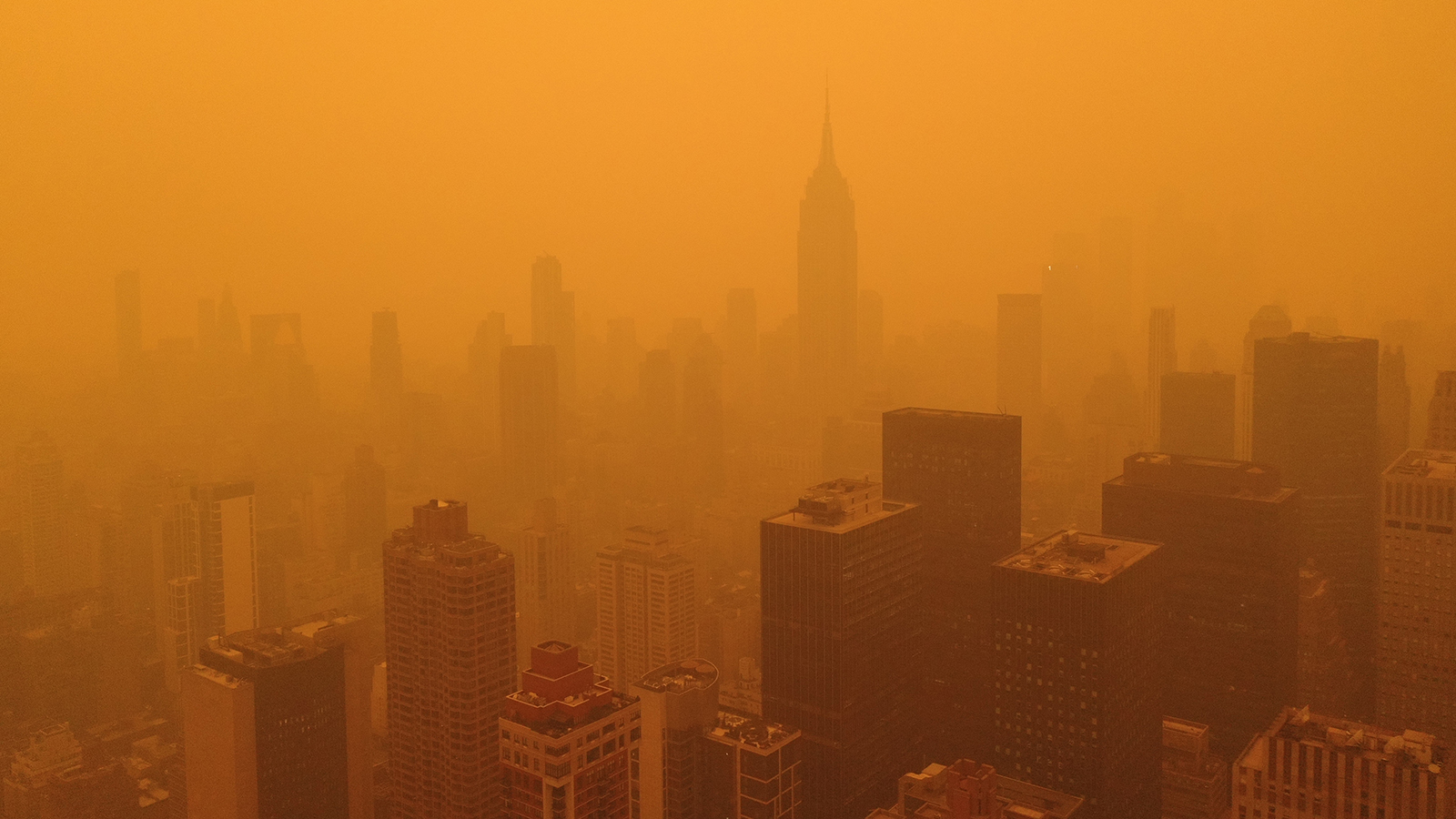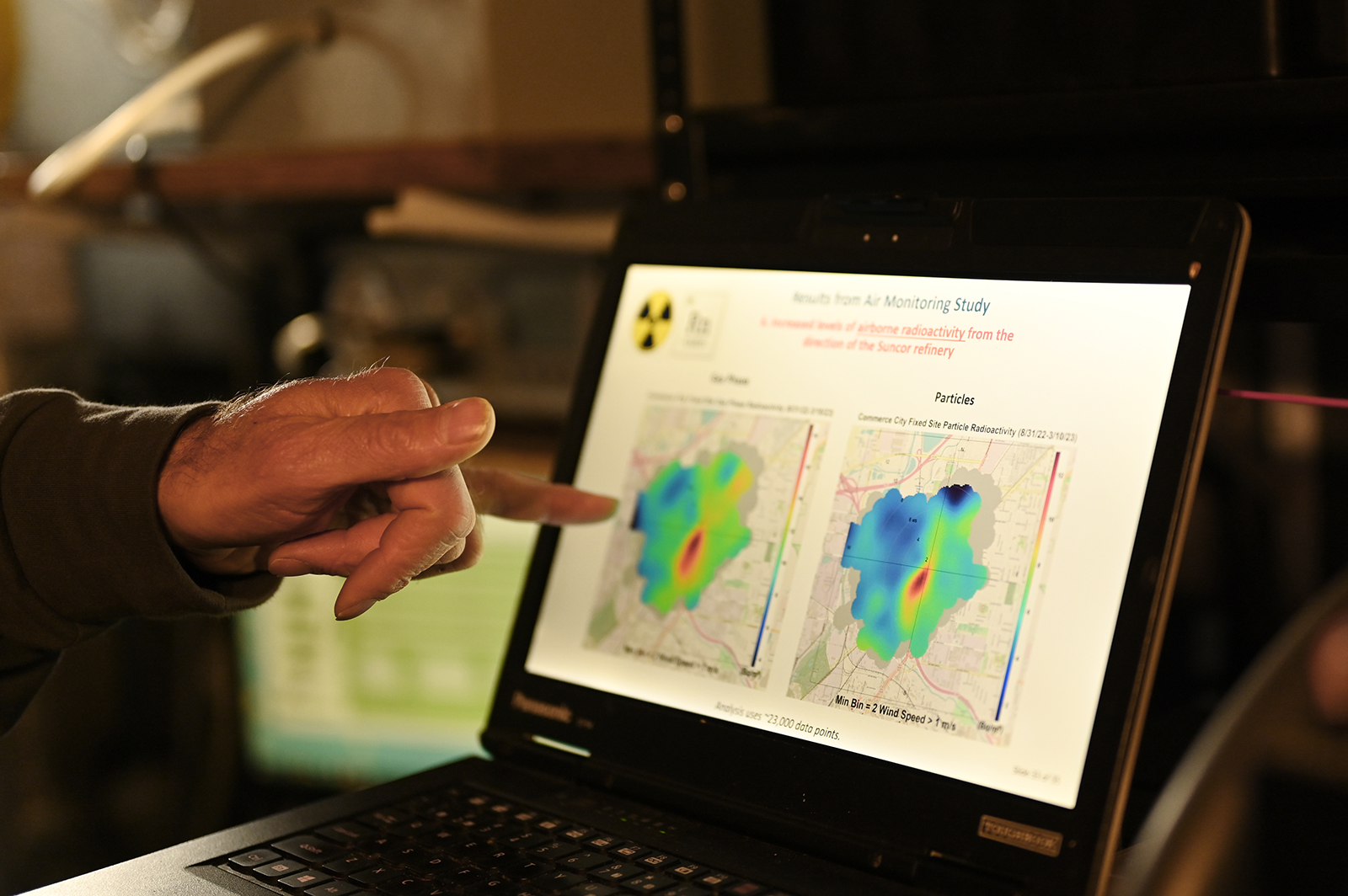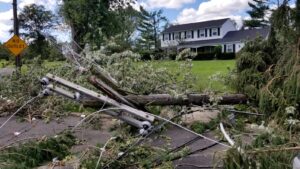
When it comes to air quality, neighboring countries are in it together. By 2023, wildfire smoke from across the Canadian border has become a primary source of air pollution in major U.S. cities, according to a report released this week.
The annual World Air Quality Report by IQAir, a Swiss air quality technology company, showed that in 2023 US residents enjoyed cleaner air than 75 percent of the 134 countries and territories measured. However, the report also found that most of the US had nearly double the level of air pollution considered acceptable by the World Health Organization, or WHO. The overall amount of unhealthy air nationwide was up slightly from the previous year, but some cities, such as Milwaukee, saw up to a 50 percent increase. The report found that while air quality continued to suffer from the usual culprits that exacerbate climate change, such as fossil fuel industries, smoke from Canadian wildfires was behind many of these spikes.
Prolonged exposure to air pollution is fatal, causing more than 8 million estimated deaths worldwide every year, and is linked to a myriad health problems, such as respiratory diseases and cancers. Studies have shown that days with higher air pollution can lower student test scores and increase emergency room visits for heart problems.
“We really want to encourage people to treat air quality just like they would treat the weather, check to see what the air quality is before spending extended time outside,” Christi Chester Schroeder, an air quality science manager at IQAir, told Grist.
For its report, IQAir collected data from more than 30,000 monitoring stations around the world. Annual pollution averages for each country and territory are based on measured amounts of PM2.5, or fine particles 2.5 micrometers or smaller. When inhaled, these small, invisible particles can enter the lungs and bloodstream. According to guidelines set by the WHO, annual air pollution averages should not exceed 5 micrograms of PM2.5 per cubic meter of air. US residents are exposed to almost twice as much.

For most of 2023, PM2.5 levels across the country averaged about 9.1 micrograms per cubic meter of air, with the worst air concentrated in major cities, including Washington, DC and New York City. The report showed that unhealthy air increased in the summer, when warm, stagnant air and sunshine interact with pollutants to create pockets of unhealthy air. In Washington, DC and Chicago, PM2.5 levels more than doubled in June, to more than five times WHO guidelines. Columbus, Ohio, was the most polluted American city for the second year in a row.
But the IQAir report also contained good news for the US: Aggressive wildfire mitigation efforts appear to be working, resulting in a less severe fire season and cleaner air on the West Coast compared to previous years. In Portland, Oregon, PM2.5 levels fell by nearly 40 percent, while Los Angeles saw a 10 percent decrease. Of the 25 most populous cities in the US, Las Vegas had the cleanest air.
According to Schroeder, a big theme of this year’s report was transboundary haze, a term that describes when smoke moves across borders. This past summer, Canada endured its worst wildfire season on record. As the flames tore through 5 percent of the nation’s forests, they created huge plumes of soot that drifted into the eastern US, blanketing New York City in an orange haze and affecting air quality as far south as Florida.
“The wind is the most efficient transportation system on Earth,” said Joel Thornton, a professor of atmospheric chemistry at the University of Washington. Although large wildfires have become an unsurprising reality, Thornton found that last year’s in Canada was unprecedentedly severe. As forests continue to be unseasonably drier and warmer due to climate change, the stage is set for these fires to get even worse, he said. “It’s a harbinger of things to come.”
Last month the Environmental Protection Agency new standards finalized for air pollution, bringing the annual average limit of 12 micrograms of PM2.5 per cubic meter of air down to 9 micrograms. The new target still exceeds the WHO guidelines of 5 micrograms, but can still bring about major improvements. According to the Biden administration, the new rules will prevent an estimated 4,500 premature deaths each year and save billions in health costs. To reflect their stricter standards, the EPA also has the Air quality indexa handy color-coded scale that runs from green (“good”) to maroon (“dangerous”).
Experts like Thornton say that wildfires could hamper efforts to meet the EPA’s new standard, even as government regulations, such as the Clean Air Act, have made American air safer than most of the world’s. “Wildfires basically wipe out a lot of that progress,” Thornton said. A 2023 study published in Nature found this wildfire smoke reversed nearly 25 percent of air quality improvements since 2000.
Currently, the EPA does not consider pollution levels from wildfires in its regulatory actions, as part of an “exceptional event rule” that kicks in when natural disasters skew environmental data. As the weather warms and fire season approaches, fire management strategies can become key to saving communities from flames and unsafe air.






